California farmers, anglers and researchers often clash over salmon. Science united them
Published in News & Features
SACRAMENTO, Calif. — In better times, droves of young winter-run Chinook salmon would travel 300 miles downstream from the Sacramento River, beneath the Golden Gate Bridge and into the Pacific. They would return as adults, shimmering silver and red, and spawn at their exact place of birth in the Sacramento–San Joaquin Delta.
Today, fewer and fewer salmon are able to survive the journey. They need cold water, increasingly difficult to access on a warming planet. They need clean water, but contaminants seep into waterways. And they simply need more water.
They’re not the only ones. The Sacramento–San Joaquin Delta is an epicenter of California’s bitter water wars, supplying water to fish, farmers and semi-arid Southern California.
Stakeholders — fishermen, farmers, water managers, researchers, agencies — often find themselves at odds with one another, in need of a living and quick to fight. But recent fish and water crises have challenged these groups to set aside their competing interests.
California’s commercial salmon fishing ban and drought-induced water curtailment to agriculture have rallied an unlikely coalition of fishermen, farmers and water managers hoping to find solutions. And when California researchers identified a new nutritional stressor to salmon, fishermen set their distrust of the scientific community aside to assist with an all-hands-on-deck management plan.
“We have so much in common,” said Johnny Atkinson, the Sausalito director for the Golden Gate Fishermen’s Association. “Instead of fighting each other, we’re sitting down and solving these issues.”
Water troubles
Where there’s salmon, there’s water. And where there’s water, there are often people fighting over it. Fishermen and farmers, whose industries are dependent on access to water, frequently form opposing sides in the water wars.
Fritz Durst, a sixth-generation farmer based in Yolo County, is no stranger to the tension between fishermen and farmers. In 2005, during his tenure as president of Reclamation District 108’s board of trustees, the water district signed a water rights contract renewal with the Bureau of Reclamation that permitted the diversion of Sacramento River water for “beneficial use.”
Fishing groups sued Reclamation District 108. They claimed the U.S. Fish and Wildlife Service biological opinion that informed the contract — which stated planned operations would not harm the endangered Delta smelt, another fish facing the same environmental threats as Chinook salmon — was “an abuse of discretion” and “failed to rely on the best available science.”
Additional litigation piled onto the original suit, stalling the legal process, until a judge ruled in favor of the water managers in June. The fight had lasted two decades.
“These fishing groups had been challenging us in court for many of our actions,” Durst said, “and I had been hoping to reach out to them.”
In the early 2020s, Californian fishermen and farmers faced crises in their ways of life. Drought killed more than 97% of winter-run Chinook salmon in 2021. Water curtailments in 2022 cost Sacramento Valley farmers 14,300 jobs and more than $1.3 billion in economic value. And after California announced its ongoing commercial salmon fishing ban in 2023, California fishermen lost $45 million in that year alone.
The solution no longer resided in the courts.
‘The fix, not the fight’
Soon after the announcement of the fishing ban, Durst received a call from an unlikely acquaintance: George Bradshaw, president of the Pacific Coast Federation of Fishermen’s Associations.
The duo had previously spoken about the fisherman–farmer divide, but only now did they recognize the need for immediate action. They realized low salmon populations hurt fishermen and farmers alike: fishermen lost their source of revenue, while subsequent conservation efforts often diverted water flow from farms to fish.
As an increasing number of fishermen and water users expressed interest in joining the talks, Durst and Bradshaw formed the Bridge Group in 2023 — a solutions-oriented coalition of fishermen and water users hoping to protect Chinook salmon, and their own livelihoods, in California.
“We’re about the fix, not the fight,” Durst said.
The Bridge Group encompasses the PCFFA, the GGFA, the NorCal Guides and Sportsmen’s Association, the Sacramento River Settlement Contractors and the Northern California Water Association. Third parties such as the California Department of Fish and Wildlife, the Bureau of Reclamation and UC Davis’s Center for Watershed Sciences occasionally advise the group.
“We’re all pretty aligned on what a world could look like,” said Thad Bettner, executive director of the Sacramento River Settlement Contractors. The water management organization, which consists of more than 135 settlement contractors in the Sacramento Valley, emphasizes collaborative action in balancing the water needs of landowners, communities and wildlife.
Bettner acts as the group’s big-picture planner, finding ways to work with agencies without overstretching their thinning resources. “We’re just trying to figure out how we can help be a resource to fill some of those gaps that federal agencies may have.”
From April to May, the coalition worked with Coleman National Fish Hatchery to place juvenile hatchery salmon in Sacramento River water, hoping that imprinting would discourage them from straying into other waterways when returning as adults.
Around the same time, several members traveled to the headquarters of the National Oceanic and Atmospheric Administration in Washington, D.C. They advocated for the establishment of a new hatchery on the Sacramento River. Funding and staffing remains an issue — at the time of the meeting, NOAA had just approved more than 1,000 deferred resignations and buyouts — but the group said their ideas were well received.
“People just sat up straight,” Durst said. “Heads snapped and turned like, ‘What, you guys are working together?’”
Sarah Bates, a commercial fisherman based in San Francisco and a member of the Bridge Group, emphasized that the alliance doesn’t mean “everybody’s getting along and the world is solved.” Disagreements still occur, and the respective groups have received pushback from within.
“But there’s different ways of resolving conflict,” Bates said. “One is asking the government agencies to step in while two groups have dug their heels in the mud. Another…is to start small with the ideas that you can agree on, present them to the agencies and get them done.”
A matter of trust
Dick Ogg, a commercial fisherman and vice president of the Bodega Bay Fishermen’s Marketing Association, has spent over 60 years on the water. His philosophy of life means he does not consume the fish and crab he catches. Instead, he focuses on acting as an environmentally responsible “conduit” between marine and human communities.
“The commercial industry is a harvester, yes,” he said, “but we are also stewards of the ocean.”
Before fishing full-time, Ogg had spent over 35 years as an electrician for Sonoma State University. A continued interest in science and a sense of goodwill prompts him to collaborate with researchers, inviting them onto his boat and sending them fish samples.
But Ogg notes his willingness to work with the scientific community makes him an anomaly among fishermen.
“Many times we’ve lost opportunity as a result of providing information,” he said. “So fishermen in general are very closed-mouth about what they see.”
Representatives from the nonprofit Oceanic Science Trust had approached Ogg and other fishermen in the mid-2000s. Working with a task force convened under the Marine Life Protection Act of 1999, they had asked the fishermen to identify areas they were most concerned about and harvested the most resources from.
These spots, Ogg said, then became marine protected areas — conservation zones spanning Santa Cruz to Mendocino County that prohibit extraction. Local fishing industries experienced drops in business, exacerbated by a simultaneous two-year ban on commercial fishing in California that cost fishermen $255 million in 2008 alone.
Ogg remained on the water, watching and wary.
All hands on deck
In 2020, Ogg and other fishermen off the California coast noticed that the flesh of adult salmon had discolored from a bright reddish pink to a dull grayish pink. Away from the sea, hatcheries across California observed juvenile salmon swimming in corkscrew patterns.
Most alarmingly, fry mortality for winter-run Chinook between 2020 and 2021 reached almost 50%.
NOAA researchers Rachel Johnson and Nate Mantua quickly called salmon experts across the country. It didn’t take long for scientists based near the Great Lakes and the Baltic Sea to identify the issue.
Chinook salmon were facing yet another stressor: a deficiency in thiamine, or vitamin B1, key for energy production and juvenile growth. It was the first time the phenomenon had been observed in California.
“Nobody in California knew what was happening in the hatcheries,” Johnson said. “I’d never even heard of thiamine deficiency before, and all of a sudden all of our salmon were dying of it.”
Like humans, salmon require a diverse diet to stay healthy. Anchovies typically make up less than half of a salmon’s diet. When consumed, anchovies produce an enzyme that breaks down thiamine.
Small doses don’t usually harm the consumer. But a population boom beginning in 2015 meant anchovies dominated the North Pacific, eventually comprising over 90% of a salmon’s diet.
The researchers acted quickly. Over Zoom calls and lab days, they developed solutions for hatchery salmon: injecting adult salmon with a thiamine booster and placing fry in thiamine baths. Five years of research eventually coalesced into a Proceedings of the National Academy of Sciences article published in June.
A typical scientific research paper lists five to 10 co-authors. The PNAS paper credits 37 researchers working across almost a dozen disciplines, 23 affiliates at the Center of Watershed Sciences and various agencies and 3,000 high school students across Northern California whose observations of developing salmon eggs in classrooms contributed to the study.
Multiple researchers said the thiamine study was their first time working on a project of that scale.
“Almost the equivalent of 10 studies went into that paper,” said Carson Jeffres, field and lab director of the Center for Watershed Sciences.
The paper also credits eight fishermen by name. Struggling to obtain samples during the COVID-19 pandemic, NOAA had put out a call in September 2021 asking for fishermen’s help.
Ogg, who is good friends with one of Mantua’s relatives, decided to trust the researchers. He and Atkinson contributed salmon stomachs, heads and eggs. Atkinson also took the team onto his boat for collection work, allowing researchers to supplement data from tightly controlled hatcheries with real-time surveys of salmon in their natural habitat.
“I’ll take what I see with my eyes over what I read in the book,” Atkinson said.
Fishermen, who are on the water as much as possible, must catch changes immediately to adapt to nature’s unpredictable booms and busts. On the flip side, a scientifically sound study requires systematic observation, sufficient data and lengthy statistical analyses — a much longer procedure.
Ogg hopes more studies will “integrate fishermen knowledge into overall scientific data” the way the thiamine study does, combining live observations with meticulous investigation.
“We can give them that general information,” he said. “We just need to trust them.”
And as most researchers note, the diversity of knowledge — spanning disciplines and ways of life — were key to managing thiamine deficiency in hatcheries.
“We’ve started to connect with people in Oregon, Washington, Idaho, British Columbia and Alaska,” Mantua said. “There’s this new network of people working on this where almost no one was working on it five years ago.”
Reconciliation ecology
As the July sun streamed through the windows of the Center for Watershed Sciences, a researcher peered into a microscope and peeled a layer from the eye lens of a refrigerated Chinook sample.
The layers on the lenses act as a diary of what a fish ate during a given period of time. Now that thiamine deficiency has emerged as a new stressor for salmon conservationists to keep an eye on, researchers want to learn how far back the diet shifts occurred.
The team may have had the resources to investigate thiamine deficiency with vigor, but it’s unclear whether or not researchers can replicate this large-scale effort if another stressor emerges.
Funding for the thiamine study came from the State of California, the CDFW and NOAA’s Cooperative Fisheries program. About 2,200 employees have been pressured to leave NOAA since January, while the agency itself wrestles against a proposed 25% budget cut.
“We all have kind of a murky crystal ball at this time,” Johnson said.
But the researchers are hopeful that time-sensitive projects will find adequate funding. The State of California’s Delta Science Program supported the thiamine study throughout the pandemic, while philanthropic organizations may keep the Spinning Salmon program afloat as the Trump administration issues cuts to scientific research.
Meanwhile, the Bridge Group continues to search for novel methods of salmon conservation. As they prepare for another trip to the capital, they hope to invite more people to their coalition — particularly environmental NGOs — and advocate for experimental floodplain solutions.
Fall-run Chinook salmon have adapted to thrive in the floodplains that used to sweep through the Sacramento Valley. But outdated levee placements render 95% of Central Valley floodplains inaccessible to the fall-run Chinook salmon that swim through the region.
Beginning in 2011, the Center for Watershed Sciences, CalTrout and Cal Marsh & Farm Ventures joined forces under the Nigiri Project — named after a sushi made up of salmon on a bed of rice. Researchers worked closely with farmers and sent juvenile hatchery salmon swimming through flooded rice fields in the Yolo Bypass.
Jeffres, a contributor to the project, said salmon grew eight times faster due to readily available nutrients and less predators. Once again, the focus lay in collaboration, not conflict.
The floodplains offer an exciting prospect for the Bridge Group, whom Jeffres describes as “driving” the push for “bigger experiments” when it comes to salmon conservation.
New problems need new solutions. Sharing water by bringing fish onto farms might just be one of them.
“We have water infrastructure, fishery infrastructure, environmental infrastructure that’s just not reaching its full potential,” Bettner said. “It was designed, built and operated in an outdated climate.”
Adapting to a changing climate isn’t limited to biology: it spans infrastructure, policy, the ways stakeholders approach problems.
Jeffres describes his work as “reconciliation” rather than “restoration.” It’s impossible to restore salmon habitats and ecological relations to what they were before dams and drought and water wars. Instead, it’s about finding a middle ground through a range of long-term solutions.
“Salmon have made it for millennia in time immemorial, and now we’re really seeing them put under stress,” Jeffres said. “This is our 100-year plan. And I think that we are getting there.”
©2025 The Sacramento Bee. Visit at sacbee.com. Distributed by Tribune Content Agency, LLC.
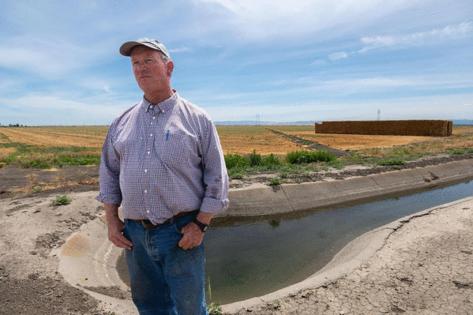
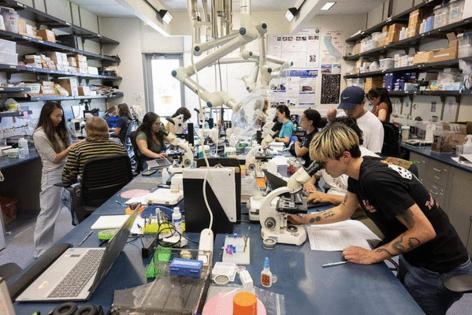
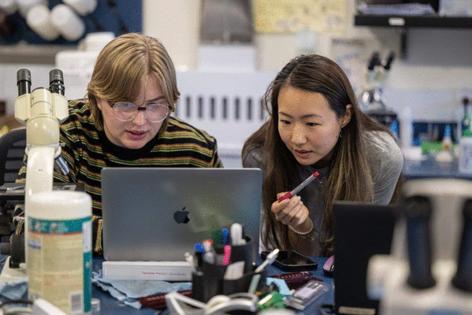
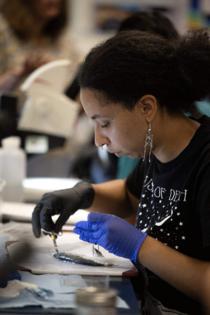
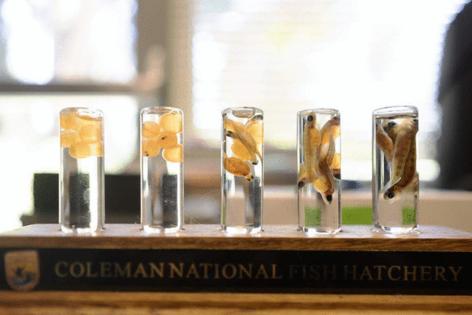











Comments